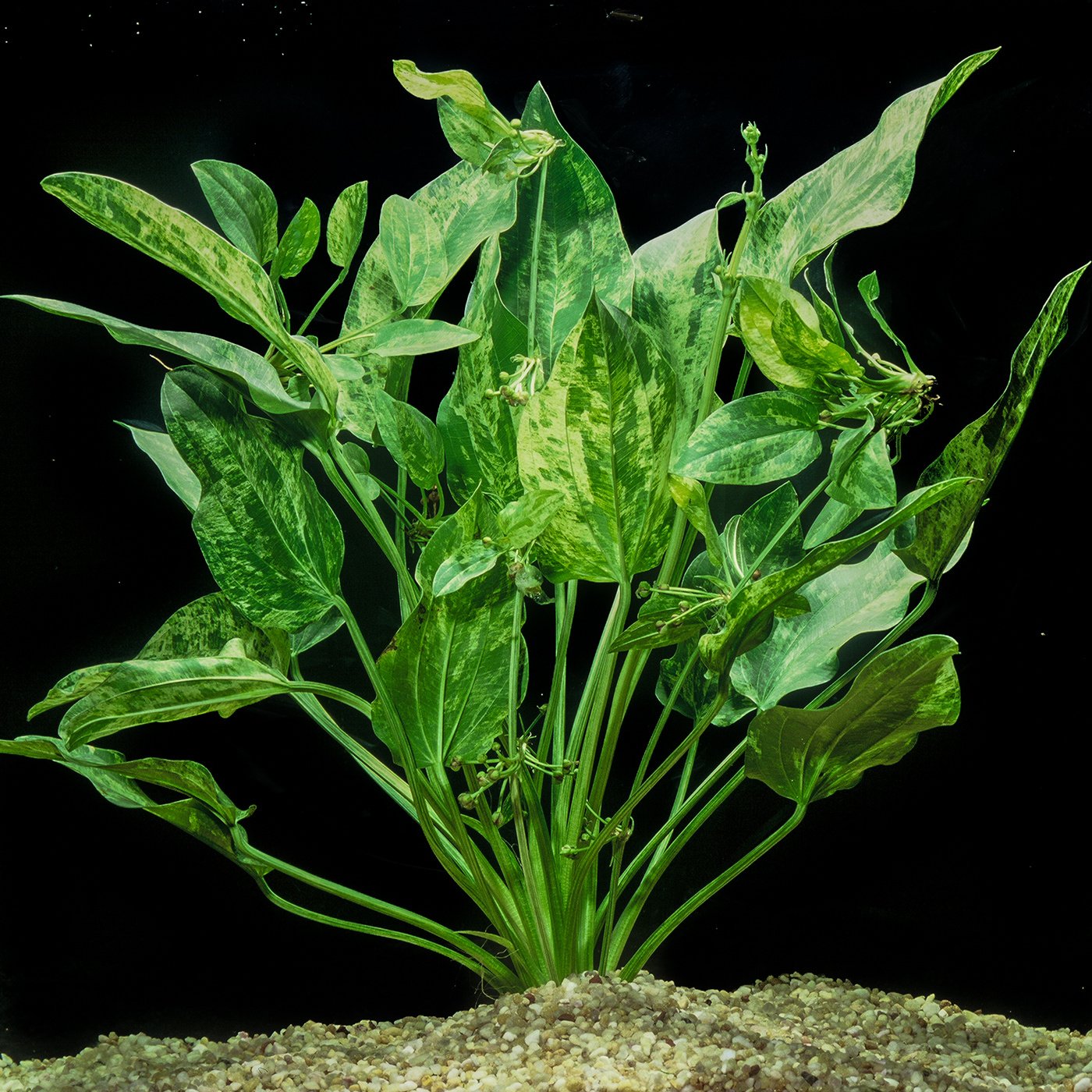
Unlock the lush beauty of the Marble Queen Sword Plant and transform your aquarium into an underwater oasis.
Exploring the Origins and Characteristics of the Marble Queen Sword
The Marble Queen Sword, also known as Echinodorus cordifolius 'Marble Queen', is a popular aquatic plant among aquarium enthusiasts. Originating from the waterways of North and South America, this plant is known for its striking variegated leaves that feature a marbled pattern of green and creamy white. The broad leaves not only provide an attractive aesthetic but also offer shelter and breeding ground for fish within the tank. Adaptable and relatively easy to care for, the Marble Queen Sword can be a centerpiece in your aquatic environment.
Cultivating the Marble Queen Sword in your aquarium is not just about aesthetics; it's also about creating a healthy ecosystem for your aquatic life. The plant's broad leaves aid in oxygenating the water and provide hiding spots for fish and other inhabitants. Furthermore, it can help in controlling algae growth by competing for nutrients, thus maintaining a balanced and healthy aquarium.
Optimal Water Conditions for Thriving Marble Queen Swords
To ensure that your Marble Queen Sword thrives, it's crucial to maintain optimal water conditions. The plant prefers a pH range of 6.5 to 7.5 and thrives in soft to moderately hard water. The ideal temperature range for this aquatic plant is between 72°F and 82°F, which suits most tropical fish as well. Regular water changes and monitoring for any significant changes in water parameters are important practices to keep your Marble Queen Sword healthy.
In addition to pH, hardness, and temperature, paying attention to the nitrogen cycle in your aquarium is important. Ammonia and nitrites should be kept at undetectable levels, while nitrates, a less harmful byproduct, should be kept low through regular maintenance. A well-maintained aquatic environment ensures that Marble Queen Swords, and the other inhabitants of your tank, will flourish.
The Right Lighting and Fertilization for Your Marble Queen Sword
Lighting is a critical factor in the growth and coloration of the Marble Queen Sword. This plant does best under moderate to high lighting conditions. Providing 10 to 12 hours of light per day will promote healthy growth and maintain the vibrant variegation of its leaves. If natural light is not sufficient, consider using full-spectrum aquarium lights to meet the plant's needs.
Fertilization is also key to the health of your Marble Queen Sword. A nutrient-rich substrate will support root growth, while additional liquid fertilizers can supply necessary micronutrients and macronutrients. Be cautious with the amount and frequency of fertilizer application to prevent nutrient overload, which could lead to algae issues. Regular testing and observation will guide you in creating the perfect balance for your aquatic garden.
Planting and Maintenance Tips for Healthy Growth
Planting the Marble Queen Sword correctly is vital for its establishment and growth. It's best to plant it in a spacious area of the tank where it has room to spread its roots and grow without being overshadowed by other plants. The crown of the plant should be above the substrate to prevent rotting. When planting, be gentle with the roots to avoid damage, as this could stress the plant and inhibit growth.
Regular maintenance of the Marble Queen Sword includes pruning dead or yellowing leaves to promote new growth and prevent decay, which can compromise water quality. If the plant becomes too large, it can be propagated by separating the plantlets, which grow from the base of the mature plant. This also helps in controlling the size of the plant and maintaining the aesthetic appeal of your aquarium.
Common Issues and Solutions for Marble Queen Sword Plants
The Marble Queen Sword is generally hardy but can encounter issues such as yellowing leaves, slow growth, or a lack of variegation. These problems are often due to inadequate lighting, improper fertilization, or poor water quality. Adjusting the light intensity or duration, tweaking fertilization routines, and ensuring optimal water conditions can often remedy these issues.
Sometimes, the Marble Queen Sword may be affected by algae growth on its leaves, which can be managed by reducing nutrients in the water, increasing water flow, and adding algae-eating fish or invertebrates to the aquarium. Regular monitoring and prompt response to any signs of distress can keep your Marble Queen Sword healthy and your aquarium thriving.





Leave a Comment